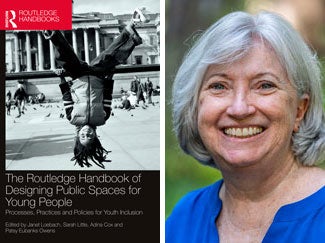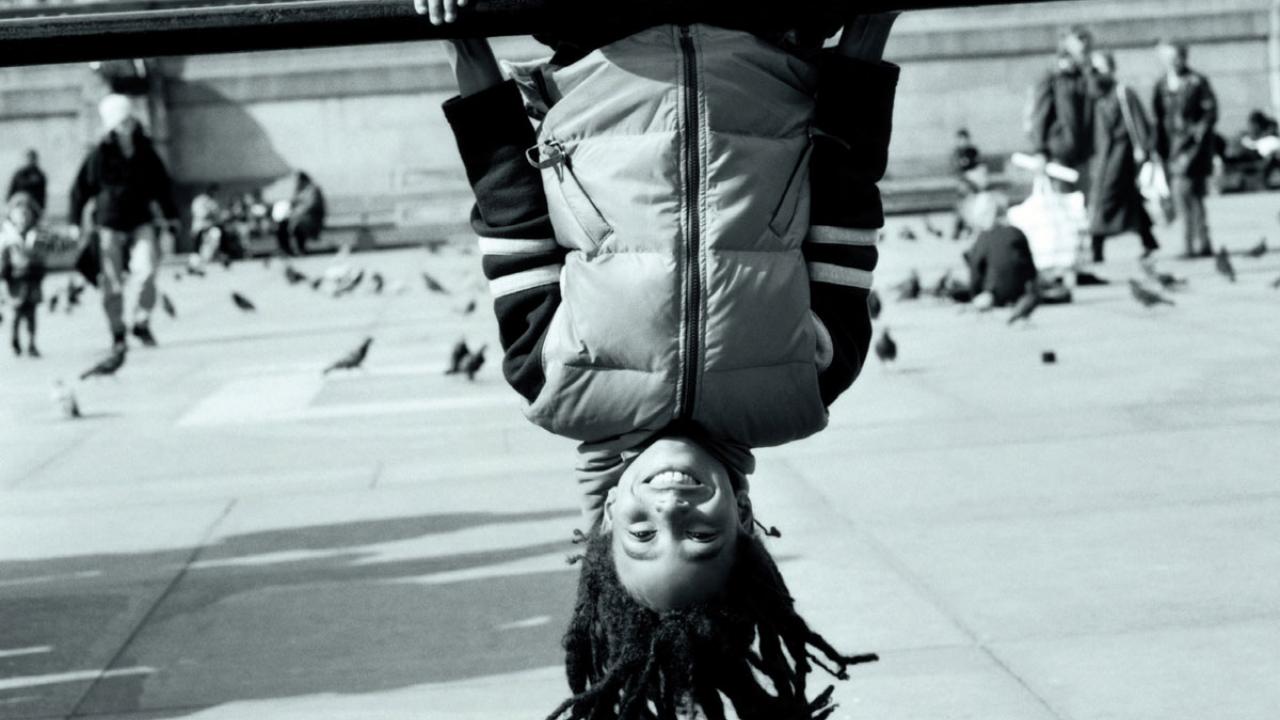
- The Routledge Handbook of Designing Public Spaces for Young People: Processes, Practices and Policies for Youth Inclusion
- Patsy Eubanks Owens (pictured) of UC Davis, senior editor and contributing author; and Janet Loebach, Sarah Little and Adina Cox, editors and contributing authors (see below for more information about the editors-authors)
- Routledge, June 15, 2020
“Cities that listen to and engage youth in creating welcoming spaces also tend to promote a high quality of life for all. Drawing from leading scholars and emerging practice, this volume is essential reading for understanding current thinking and best practices for how and why engaging and valuing youth perspectives is so important in the public realm.” ― Victoria Derr, assistant professor, Environmental Studies Program, California State University, Monterey Bay
Patsy Eubanks Owens, professor of landscape architecture and environmental design in the Department of Human Ecology, says that when she first started her research on adolescents and their relationship with the physical environment, she was hoping to identify and study landscapes that had been created for youth.
Instead, she learned that designers were being asked to create places that discouraged use by young people, as a way to avoid the trouble they may cause. She was then inspired to study the impact of these exclusionary practices on youth.
Owens and her co-editors, in Part 1 of Designing Public Spaces for Young People, highlight the “role the physical environment plays in youth development, the importance of risk and play, and the benefits of including young people in the design and construction processes.”
“In addition, we draw attention to the unique role these places can play for racially or ethnically marginalized youth.”
Owens noted that each chapter includes a “takeaway” sheet with key points, and that the takeaways are available for free download to assist as many people and organizations as possible with proposals for youth inclusion in public places.
‘Important venues for youth’
The handbook promotes the point of view that the needs of young people must be considered and acknowledged in the design, creation and management of public places.
“In order to do so, designers, planners, policymakers and others should seek out and listen to their local youth populations and engage them in the decision-making processes,” Owens said.
“Instead of assuming that young people will be causing trouble, and therefore they need to be discouraged from public spaces, we must recognize that these places provide important venues for youth to grow into healthy and productive members of society.”
While the book was not written as a textbook, the contents are relevant to many courses on campus that address youth development, public space design or community engagement practices, Owens said. She herself will incorporate chapters into her courses. Other faculty have already done so.
“Our overarching premise in the book is that all youth have the right to use and inhabit public outdoor environments without prejudice or consequence,” Owens said. “We believe that youth ideas, opinions and needs should be considered essential to the decision-making processes utilized when creating public spaces. Our desire is to shift the trend from youth exclusion to youth inclusion — to make public spaces more inclusive for young people.”
The editors/authors
- Patsy Eubanks Owens earned a bachelor’s degree in landscape architecture at the University of Georgia and a master’s in landscape architecture at UC Berkeley. While studying in Berkeley, she took the opportunity to observe teenagers hanging out in the city’s downtown, talking with them about their preferred places and activities — all with the aim of informing her design decisions. More than 30 years later, she continues to examine the role of the physical environment in the development, health and well-being of youth. She serves as associate dean for the human and social sciences in the College of Agricultural and Environmental Sciences.
- Janet Loebach is an environmental design researcher and consultant, and an assistant professor in the Department of Design and Environmental Analysis at Cornell University. She is vice president of the International Play Association (Canada) and co-chair of the Children, Youth and Environments Network of the Environmental Design Research Association.
- Sarah Little, a registered landscape architect, is an assistant professor of landscape architecture at the University of Oklahoma.
- Adina Cox is a postdoctoral scholar in the Department of Landscape Architecture at the University of Kentucky. Her work has been inspired by her childhood spent in the redwood forests of Northern California, and by her experiences raising her own children in North Carolina.
Leigh Houck is a June 2020 graduate of UC Davis — Spanish literature major, writing minor — who works as in intern for the News and Media Relations Team in the Office of Strategic Communications.
